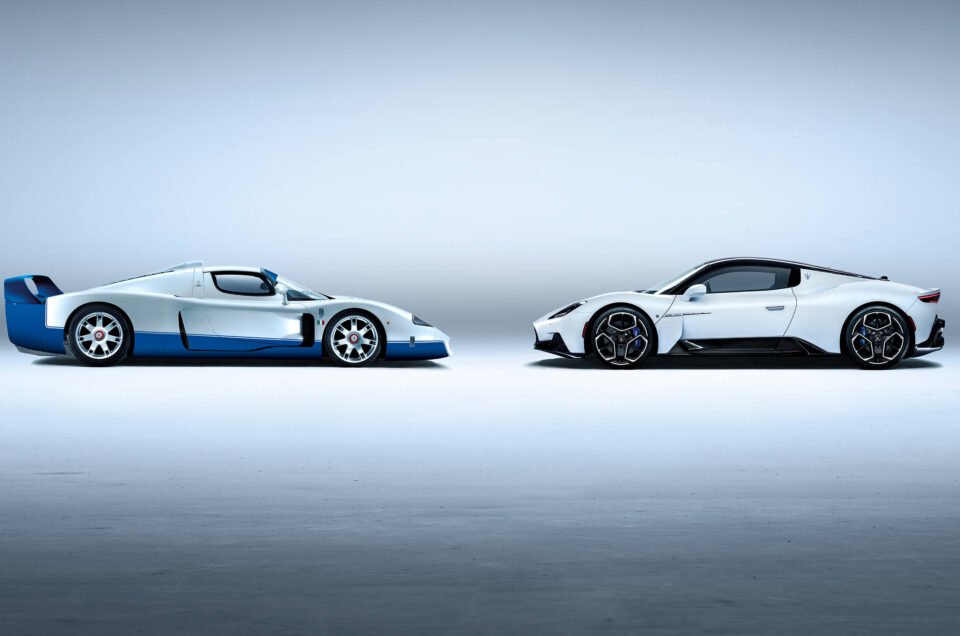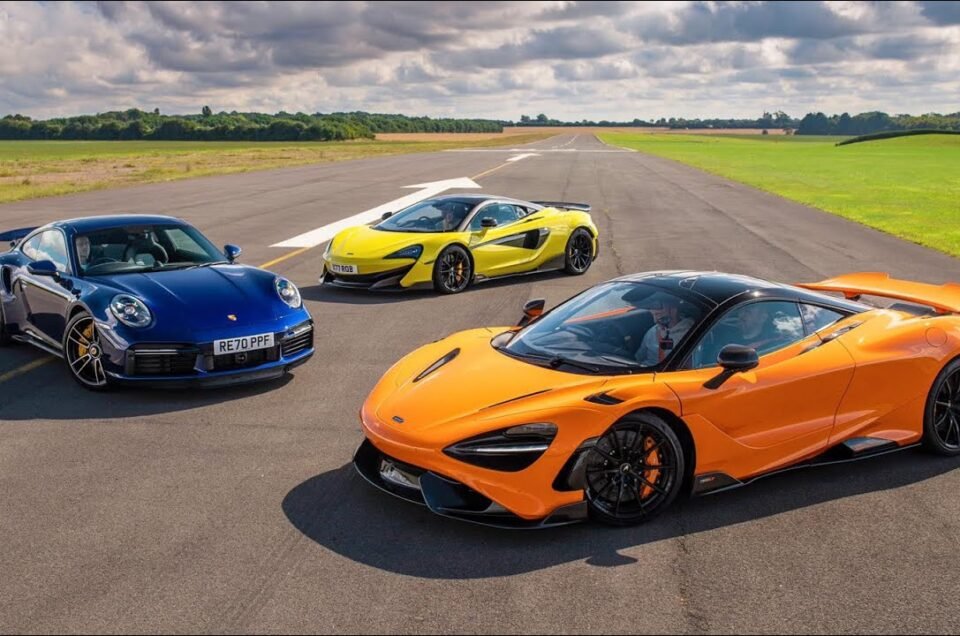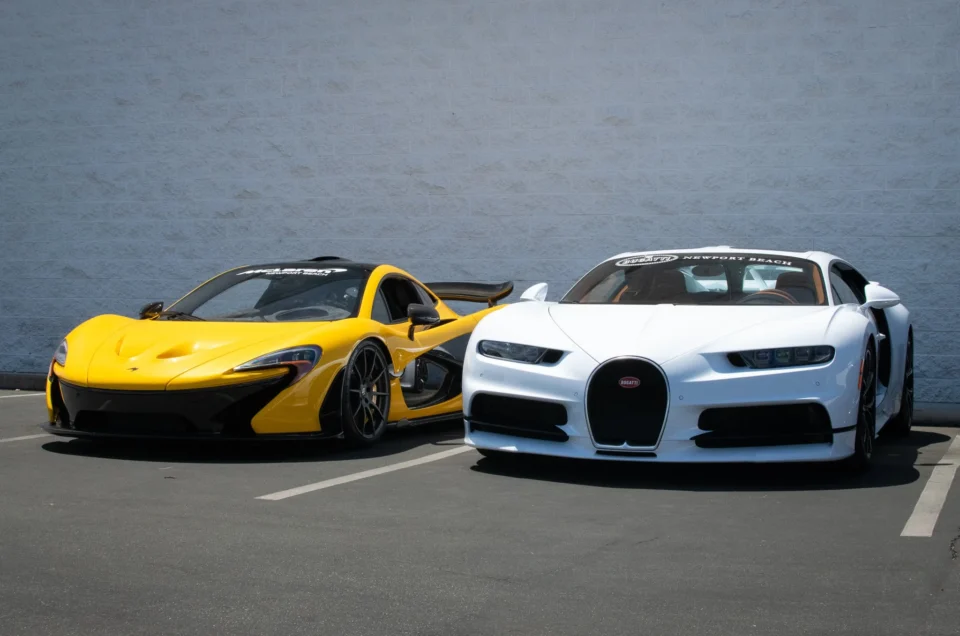Introduction to Luxury Cars
The realm of luxury cars is synonymous with unparalleled craftsmanship, cutting-edge technology, and an unwavering commitment to delivering the ultimate driving experience. These automobiles are distinguished by their exquisite design, meticulous attention to detail, and use of the finest materials, setting them apart from conventional vehicles. From hand-stitched leather interiors to state-of-the-art infotainment systems, luxury cars are designed to offer a sense of opulence and sophistication that transcends beyond mere transportation.
Owning a luxury car often signifies not just wealth but a discerning taste and an appreciation for engineering excellence. These vehicles embody more than just high performance; they represent a blend of art and science, capturing the imagination and aspirations of car enthusiasts around the world. The prestige associated with brands like Rolls-Royce, Bentley, and Bugatti lies in their storied histories and their commitment to pushing the boundaries of automotive innovation and luxury.
Culturally, luxury cars are often seen as status symbols, embodying success and exclusivity. The allure of owning one of these opulent machines is fueled by their rarity and the painstaking effort required in their creation. Each vehicle is often tailored to the individual tastes and preferences of its owner, making every luxury car a unique masterpiece. As we delve deeper into this blog, we will explore the pinnacle of automotive luxury and examine the factors that designate the title of the richest car in the world.
“`
Criteria for Determining the Richest Car
Determining the richest car in the world involves a multifaceted evaluation of various elements, each contributing uniquely to the car’s esteemed status. The most apparent factor is the price — a direct indicator of the financial value assigned to the vehicle. Cars that command extraordinary prices are a reflection of advanced engineering, luxurious materials, and often, the bespoke services involved in their creation.
Exclusivity is another pivotal criterion. Limited production runs, often fewer than a hundred units, significantly elevate a car’s value. A car’s rarity transforms it into a coveted collector’s item, driving up demand among affluent buyers. Exclusivity extends beyond mere numbers to include special editions or customized models tailored to specific client demands, making each vehicle a unique masterpiece.
Design and aesthetics are crucial. A car’s outward appearance, from its sleek contours to the opulence of its interior, plays a vital role in its valuation as the richest car. High-end materials such as fine leather, precious metals, and rare woods contribute to an elevated aesthetic, while cutting-edge technological integrations enhance both functionality and comfort.
Performance metrics cannot be overlooked. Superior engine technology, exceptional speed, and handling capabilities underscore the investment in research and development by the manufacturers. Cars featuring revolutionary innovations in performance are often revered not just for their speed or power, but for their contribution to automotive advancement.
Brand reputation also heavily influences the esteemed title of the richest car. Brands with a longstanding history of excellence, exemplary craftsmanship, and consistent delivery of high-quality vehicles can command higher prices and respect in the market. The pedigree associated with owning a car from a prestigious brand adds intangible value.
Collectively, these criteria provide a holistic view of what constitutes the richest car. Price, exclusivity, design, performance, and brand reputation all intertwine to craft a vehicle that is not just a means of transportation, but a symbol of wealth, innovation, and unparalleled luxury.
Historical Background of High-End Automobiles
The history of high-end automobiles is a reflection of mankind’s relentless pursuit of innovation and luxury. Tracing back to the early 20th century, some of the first luxury cars emerged as status symbols for the wealthy elite. The Mercedes-Simplex, introduced in 1902, is often regarded as one of the world’s first true luxury vehicles, showcasing elements of advanced engineering and superior quality that set it apart from its contemporaries.
The 1920s heralded the Golden Age of automotive luxury, with brands like Rolls-Royce and Bentley establishing themselves as the epitomes of opulence and sophistication. Rolls-Royce’s Silver Ghost, introduced in 1906, and later iterations such as the Phantom, became benchmarks for what a luxury automobile should be. Innovations like improved suspension systems, better braking technology, and quieter cabins were among the key features that defined this era.
Moving into the mid-20th century, post-WWII economic growth spurred the development of new luxury vehicles. Ferrari and Aston Martin made significant strides with their offerings, combining high-performance specifications with luxurious interiors. These brands not only catered to the elite’s desire for exclusivity but also infused a sense of racing heritage into the luxury automobile market.
In the latter half of the 20th century, technological advancements began to redefine the landscape of luxury automobiles. The introduction of features such as power steering, anti-lock brakes, and electronic stability control became standard in high-end cars. The 1980s and 1990s saw brands like Mercedes-Benz and BMW innovating with their S-Class and 7 Series models, respectively, incorporating cutting-edge technology, superior craftsmanship, and impeccable design.
Today’s luxury automobiles are marvels of modern engineering, seamlessly blending state-of-the-art technology with unparalleled comfort and bespoke craftsmanship. From self-driving capabilities to eco-friendly hybrid powertrains, the evolution of high-end automobiles continues to push the boundaries of what is possible, forever changing the way we perceive luxury on wheels.
Top Luxury Car Brands Competing for the Title
In the world of opulence and performance, several luxury car brands consistently vie for the title of the richest car. Each brand carries a storied legacy of craftsmanship, innovation, and exclusivity, ensuring their models are not just vehicles, but symbols of status and wealth. Among the front-runners in this race are Rolls-Royce, Bugatti, Pagani, and Ferrari, each with a unique proposition that sets them apart.
Rolls-Royce stands as a paragon of elegance and prestige. The British marque’s flagship model, the Rolls-Royce Phantom, combines timeless design with cutting-edge technology. The Phantom’s bespoke nature allows owners to tailor every detail to their exact specifications, reinforcing the brand’s commitment to luxury and personalization. Often described as a “suite on wheels,” the Phantom encapsulates the epitome of refined motoring.
Bugatti, synonymous with engineering excellence and exorbitant speeds, offers models that redefine automotive performance. The Bugatti Chiron, its current flagship, is a masterpiece that boasts a quad-turbocharged W16 engine, producing upwards of 1,500 horsepower. With a top speed that exceeds 260 miles per hour, the Chiron is not only a symbol of wealth but also a testament to the pinnacle of automotive engineering and aerodynamics.
Pagani, an Italian artisan of hypercars, infuses every creation with meticulous craftsmanship and artisanal flair. The Pagani Huayra, characterized by its unique blend of art and science, features a twin-turbo V12 engine and an ultralight carbon-titanium body. Each Huayra is handcrafted, making it a highly coveted piece among car enthusiasts and collectors alike. Pagani’s limited production numbers further amplify its exclusivity and appeal.
Ferrari, with its rich history in motorsports and performance, offers pinnacle models like the LaFerrari. Combining a V12 engine with an electric motor, the LaFerrari achieves outstanding performance figures while incorporating hybrid technology. Renowned for its dynamic handling and iconic design ethos, Ferrari continuously pushes the boundaries of speed and innovation.
These brands, with their illustrious heritage, technological marvels, and eye-watering price tags, epitomize the quest for the ultimate luxury car. While the debate over the richest car is subjective, the enduring appeal of these marques ensures they remain at the forefront of automotive luxury.
Spotlight on the Current No. 1 Richest Car: The Bugatti La Voiture Noire
The Bugatti La Voiture Noire, renowned as the epitome of luxury and automotive excellence, holds the title of the most expensive car in the world. This unparalleled masterpiece, priced at an astonishing $18.7 million, sets new benchmarks in both design and performance, positioning it at the zenith of the luxury car market.
Inspired by the iconic Bugatti Type 57 SC Atlantic, La Voiture Noire blends heritage with innovation. Its sleek, all-black exterior not only underscores its name, translating to “The Black Car,” but also embodies elegance and sophistication. The exterior design, reminiscent of Grand Tourers, showcases a meticulously crafted carbon-fiber body highlighted by an uninterrupted flow from the front grille to the elongated rear end.
Under the hood, the Bugatti La Voiture Noire is powered by an 8.0-liter quad-turbocharged W16 engine, producing a staggering 1,479 horsepower and 1,180 lb-ft of torque. These impressive specifications enable the vehicle to accelerate from 0 to 60 mph in just 2.4 seconds, with a top speed exceeding 260 mph. Such performance metrics place it on par with the fastest hypercars, yet the La Voiture Noire remains distinguished by its unique attention to detail and luxury.
In the interior, the Bugatti La Voiture Noire features an array of awe-inspiring components. Fine leather seats, sophisticated control interfaces, and a dashboard crafted with precision contribute to an environment of unparalleled opulence. Every element, down to the smallest stitch, is designed with the utmost care, ensuring a driving experience that is both luxurious and exhilarating.
What truly sets the Bugatti La Voiture Noire apart in the world of luxury automobiles is not just its performance or aesthetic appeal but also its rarity. This one-off creation exudes exclusivity, resonating with aficionados and collectors who recognize its historical significance and revolutionary design. As a tribute to Bugatti’s illustrious past and a beacon of its future, La Voiture Noire stands unrivaled as the world’s richest car.
The Engineering Marvel Behind Bugatti La Voiture Noire
The Bugatti La Voiture Noire stands as a testament to the pinnacle of automotive engineering, blending unmatched performance with sophisticated design. Central to its prominence is the formidable engine, an 8.0-liter quad-turbocharged W16 powerhouse responsible for producing an astounding 1,479 horsepower and 1,180 lb-ft of torque. This engine allows the vehicle to accelerate from 0 to 60 mph in a mere 2.4 seconds, showcasing the peak of automotive performance.
Beyond its sheer power, the Bugatti La Voiture Noire is crafted from state-of-the-art materials. The extensive use of carbon fiber in its construction not only ensures rigidity and safety but also contributes to a remarkably lightweight frame. This composite material is pivotal in enhancing the car’s agility and overall performance. Coupled with state-of-the-art carbon-ceramic brakes, the balance between power and control remains unmatched.
Aerodynamics play a crucial role in the Bugatti La Voiture Noire’s design. The streamlined silhouette and meticulously sculpted bodywork reduce air resistance, ensuring stability even at top speeds. The active aero elements, such as the rear wing, adjust dynamically to maintain optimal downforce and stability under various driving conditions. This sophisticated aerodynamic design is crucial for achieving both high-speed performance and efficient fuel consumption.
Advanced technological features further elevate the Bugatti La Voiture Noire into the realm of automotive artistry. The vehicle is equipped with an intelligent all-wheel-drive system and active rear differential, providing exceptional handling and traction. Inside the cabin, luxury meets technology with a high-definition infotainment system, premium leather upholstery, and customizable interior lighting, ensuring an unparalleled driving experience.
The fusion of cutting-edge engineering, innovative materials, and aerodynamic precision makes the Bugatti La Voiture Noire not just a car, but an engineering masterpiece. Its myriad features and capabilities underscore why it commands a position of exclusivity and reverence in the world of luxury automobiles.
The Cultural and Social Impact of Owning the Richest Car
Owning the richest car represents more than just possessing a highly valuable asset; it symbolizes a level of success and prestige that transcends conventional measures of wealth. These exclusive vehicles serve as conspicuous status symbols, bestowing their owners with a sense of accomplishment and solidifying their position within a rarefied social echelon. For many, the ownership of such a luxurious car marks a tangible milestone, demonstrating their ability to achieve and maintain significant financial success.
The cultural significance of having the richest car is profound. These vehicles are not merely modes of transportation but are often regarded as works of art, featuring unique designs, custom interiors, and cutting-edge technologies. As a result, they become objects of admiration, fostering a deeper cultural appreciation for automotive innovation and craftsmanship. The appeal of owning the richest car extends beyond individual pride, contributing to a broader cultural narrative where luxury and technological prowess are celebrated.
Socially, owning the richest car can shape interpersonal dynamics and community relationships. While these vehicles grant their owners a highly regarded status within elite circles, they can also facilitate networking opportunities and create bonds among luxury car enthusiasts. Events such as exclusive car shows, private exhibits, and club gatherings become venues for like-minded individuals to connect, exchange ideas, and revel in their shared passion for luxury automobiles. This sense of community fosters a network of influence that extends beyond the automotive world, impacting various areas of business and social interactions.
In summary, the impact of owning the richest car is multifaceted, encompassing cultural recognition and social influence. It is a testament to the owner’s achievements and a beacon of aspirational success. Beyond personal gratification, these vehicles enrich the cultural tapestry and create interconnected communities united by their appreciation for the epitome of automotive opulence.
Future of Luxury Automobiles: Could There Be a New No. 1?
As we venture into the future of luxury automobiles, the question on everyone’s mind is whether a new contender could potentially dethrone the Bugatti La Voiture Noire as the richest car in the world. The luxury car market is dynamic, continually evolving with emerging technologies, and new brands aiming to redefine opulence and engineering excellence.
One significant trend shaping the future of luxury automobiles is the rise of electric vehicles (EVs). Luxury brands are increasingly focusing on integrating sustainable technologies without compromising on performance or luxury. Tesla, for example, has set a benchmark with its Model S Plaid, combining electric power with high-end features. Similarly, other established luxury car makers like Porsche with their Taycan and even traditional manufacturers like Rolls-Royce are venturing into the electric segment, potentially setting the stage for a new peak in luxury automobile offerings.
Moreover, the advent of autonomous driving technology is poised to revolutionize the luxury car market. Brands like Mercedes-Benz and Audi are investing heavily in advanced driver-assistance systems (ADAS) and fully autonomous capabilities. These technologies promise not just convenience but enhanced safety and a unique, opulent driving experience. Fully autonomous luxury cars could set new standards and perhaps introduce contenders for the title of the richest car.
New luxury car brands are also emerging with innovative and disruptive approaches. Hypercars by brands like Rimac and Koenigsegg are pushing the boundaries of speed, design, and technology. The Rimac Nevera, for instance, showcases extraordinary performance with its electric hypercar technology, potentially positioning itself as a future frontrunner in luxury and innovation.
Finally, upcoming models from established luxury brands cannot be overlooked. Companies like Ferrari and Lamborghini continue to innovate with limited-edition models that combine cutting-edge technology with unparalleled craftsmanship. Special editions and bespoke vehicles often set new benchmarks for luxury, exclusivity, and hence, value.
In summary, the future of luxury automobiles holds immense potential for new technologies, brands, and models to emerge. Whether focusing on sustainability, autonomous technology, or sheer opulence, these innovations could redefine what it means to be the richest car in the world.







